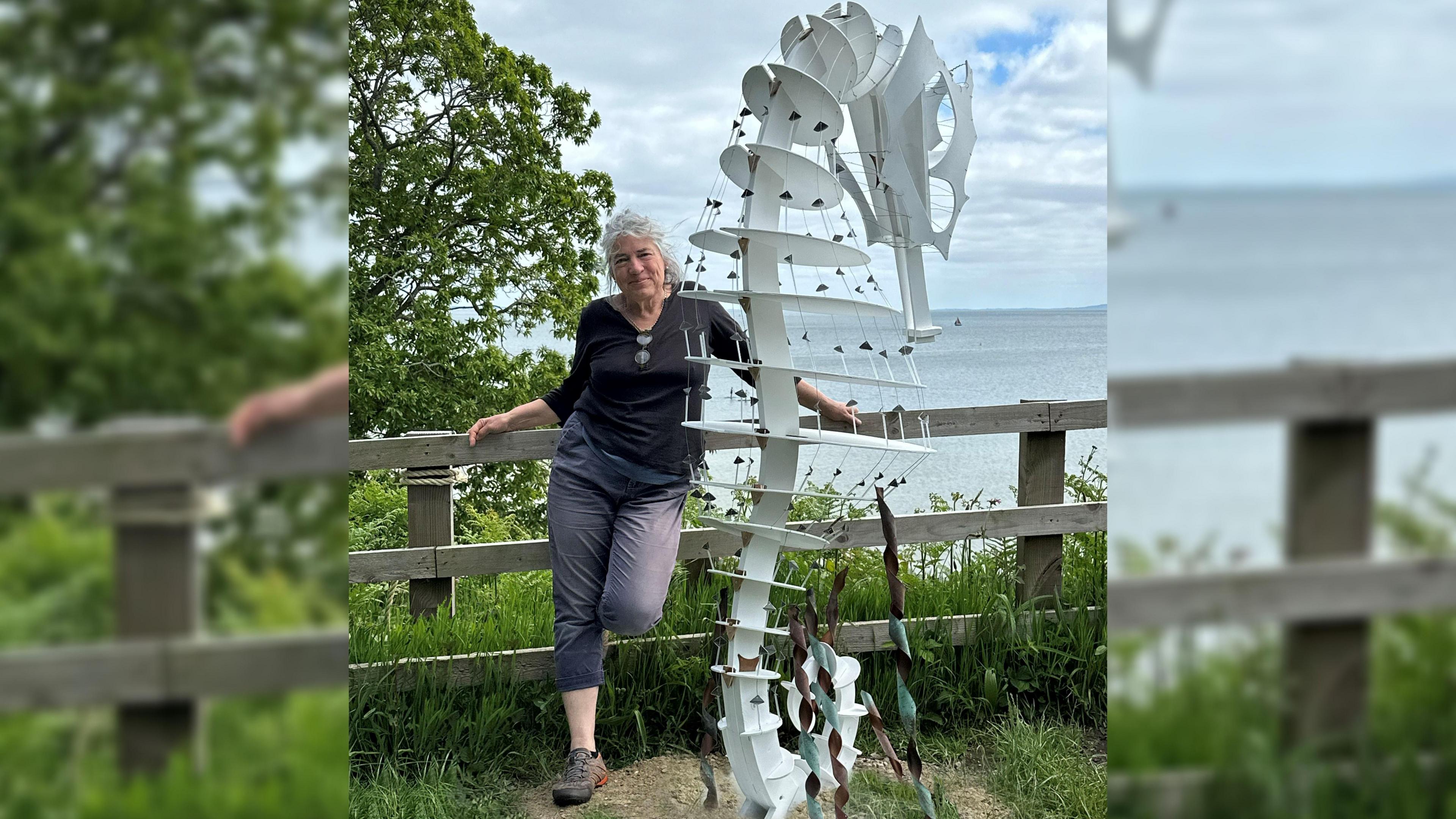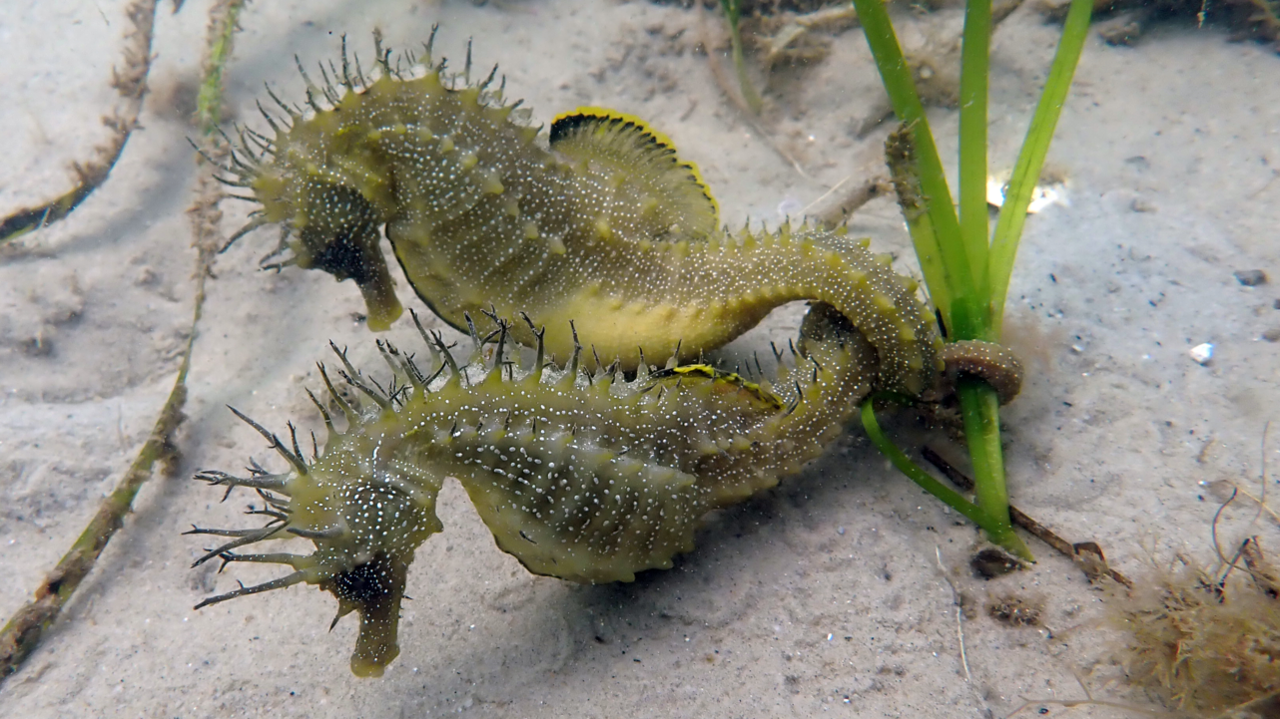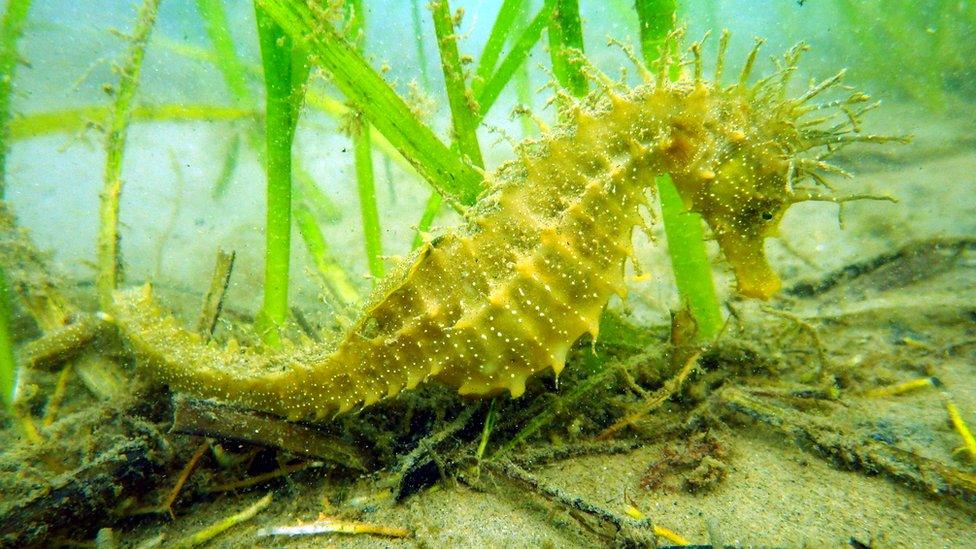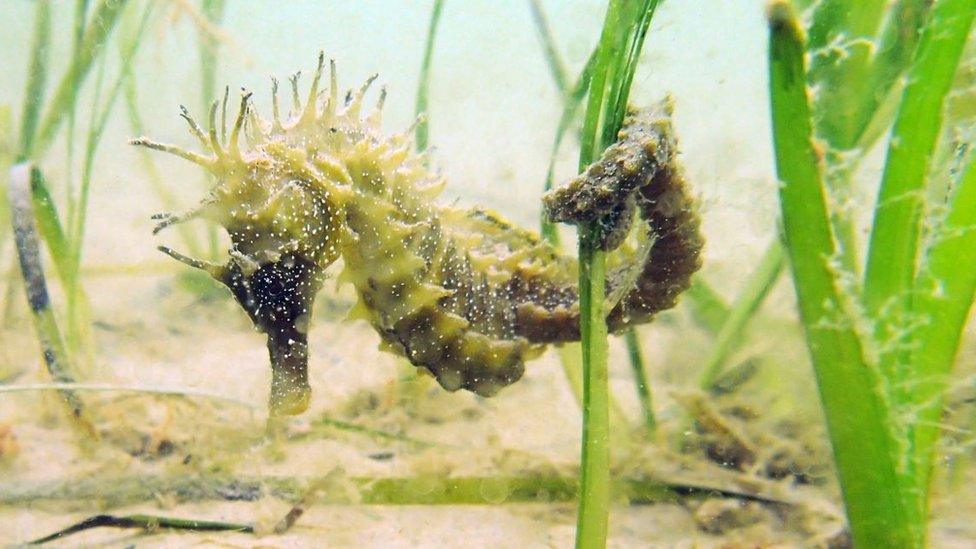Giant seahorse sculpture built at tourist hotspot

The marine model will be at Studland Bay until the end of summer
- Published
A giant seahorse sculpture created to highlight the importance of declining seagrass meadows has been installed on the coast.
Standing at 2.2m (7.2ft) tall, the marine animal has been installed at Middle Beach in Studland Bay, Dorset.
It was built by artist Eilidh Middleton, who has named the model Neptune.
Seagrass meadows in the UK have declined significantly over the last century, according to the National Trust.

Seagrass is thought to act as a filter, which can improve water quality by trapping sediment and pollutants
Studland Bay's seagrass meadow is home to two native seahorse species - the spiny seahorse and short-snouted seahorse.
Seagrass provided a safe habitat for the creatures, the trust said.
Sarah Coggins, coastal change engagement officer at the National Trust, said the plant had "superpowers".
"It creates biodiverse hotspots that not only support our seas but the climate too," she added.
But the organisation said seagrass meadows in the UK had declined significantly over the last century, due to climate change, heightened storms and vessels anchoring, which can damage the roots.
Studland's seagrass is protected within a Marine Conservation Zone and a Voluntary No Anchor Zone (VNAZ), external was introduced in 2021.
Neptune the seahorse is made entirely of material from the artist's previous works, including a 200m (656ft) long Sand Lizard installed on the mound of Corfe Castle in 2023.
The seahorse sculpture, which looks out over Studland Bay and towards Dorset's largest seagrass meadow, will be in place until the end of summer.
Follow BBC South on Facebook, external, X (Twitter), external, or Instagram, external. Send your story ideas to south.newsonline@bbc.co.uk, external or via WhatsApp on 0808 100 2240, external.
See also
- Published20 April 2024

- Published28 November 2023

- Published2 June 2020
